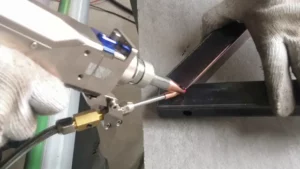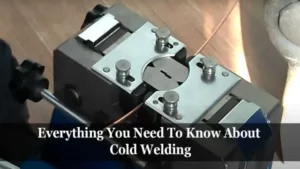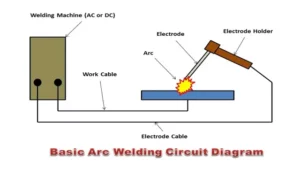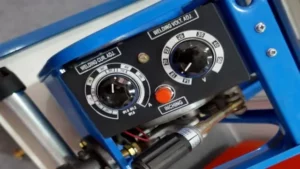Have you ever found yourself in a pinch with a broken plastic item and no clue how to fix it? Luckily, using a plastic welding machine can come in handy during these moments. Whether you’re repairing a car bumper, a bike fender, or even a plastic pipe, a plastic welding machine can provide a long-lasting solution. But where do you even begin with a plastic welding machine? What are the steps to ensure a successful repair? In this step-by-step guide, we’ll cover everything you need to know about using a plastic welding machine, from setting up your workspace to finishing off the repair with finesse.
So grab your safety gear and let’s get started! By the end of this guide, you’ll be confident in using a plastic welding machine and ready to tackle any plastic repair job that comes your way.
Introduction
Plastic welding machines are an excellent tool for repairing plastic items. Whether you’re fixing a broken bumper or a hole in a container, a plastic welding machine can get the job done easily. However, using a plastic welding machine might seem a bit daunting if you’ve never done it before.
The first thing you need to do is choose the right type of welding machine based on the type of plastic you’re working with. Once you have the right equipment, clean the area you want to weld thoroughly, and prepare the plastic welding rod. When you start welding, make sure to maintain a consistent speed and temperature, and apply the welding rod at a consistent angle.
Keep in mind that practice makes perfect, so don’t be discouraged if your first welding attempt isn’t perfect. With time, patience, and practice, you’ll be able to master the art of plastic welding and repair your plastic items with ease.
What is a plastic welding machine?
A plastic welding machine is a tool used to bond or join plastic materials together using heat. It is a handy device that can help you mend any plastic item in need of repair, such as car bumpers, PVC pipes, and many more. A plastic welding machine works by using a heated element that melts the plastic, which is then fused together to form a bond.
This device can be used for a wide range of applications, including automotive, plumbing, and construction. It is an efficient alternative to traditional methods such as adhesive bonding or mechanical fastening. The best part about using a plastic welding machine is that it creates a strong, permanent bond that can withstand various stresses and strains.
With the growing demand for plastic welding machines, many different types and models can cater to specific applications. From hand-held devices to sophisticated automated systems, there is a plastic welding machine to meet almost any need.
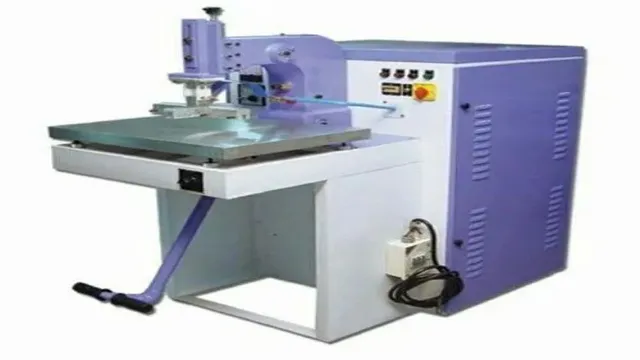
Why use a plastic welding machine?
If you’ve ever needed to repair plastic items, then you know the importance of having the right tools for the job. One such tool that you may want to consider is a plastic welding machine. As the name suggests, a plastic welding machine is designed to “weld” plastic items together.
This is achieved by heating the plastic to its melting point, fusing the two pieces together, and then allowing it to cool and harden. It’s a process that can be used on a variety of different plastic items, including toys, automotive parts, and even household appliances. By using a plastic welding machine, you can avoid the need for expensive replacements and help reduce plastic waste.
So why not consider investing in one today?
Preparing for Use
Congratulations on purchasing a plastic welding machine! Now, it’s time to get started on using it. The first step is to familiarize yourself with the machine and its parts. Take a look at the instruction manual and identify each component of the equipment, including the heating element, controls, and the welding rod feeder.
Next, ensure that you have all the necessary safety equipment, such as gloves and safety glasses, before operating the machine. Once you have everything ready, plugging in the machine and turning it on is your next step. But, before you start welding, make sure to practice on a test piece of plastic to adjust settings and get the hang of the machine.
Work in a well-ventilated area and pay attention to the temperature control as it is crucial to the quality of the welding seam. With a little practice, and following safety protocols, you’ll be able to weld with confidence and precision with your plastic welding machine.
Choosing the correct plastic welding rod
When it comes to plastic welding, choosing the right welding rod is crucial for ensuring a strong and long-lasting weld. Before using any welding rod, it is essential to prepare it correctly. This involves cutting the rod to the correct length, removing any dirt or debris, and checking that it is the correct diameter for your specific project.
It is also important to store your welding rods in a cool and dry place away from direct sunlight to prevent them from becoming brittle or damaged. By taking the time to properly prepare your plastic welding rod, you can have confidence that your weld will be strong and durable. Remember, the key to a successful weld is in the preparation.
Preparing the welder for use
When it’s time to use your welder, it’s important to make sure it’s properly prepared. One of the first steps in preparing the welder for use is to inspect the machine. You should check the cables, leads, and any other parts for any signs of damage or wear and tear.
If any issues are found, make sure they’re repaired or replaced before beginning to weld. Next, you’ll want to ensure the welder is clean and free of any debris. Dirt or debris can create problems for the weld, so it’s important to take the time to clean the machine before use.
Additionally, you should ensure the welder is set up correctly for the type of welding you’ll be doing. This may include adjusting the amperage or choosing the appropriate welding wire. By properly preparing your welder for use, you can help ensure a successful and safe welding job.
Performing the Weld
If you are wondering how to use a plastic welding machine, the key is to understand the process of performing the weld. The first step is to prepare the area that needs to be welded by removing any debris or contaminants. Next, adjust the temperature and speed settings on the welding machine to suit your specific needs.
Once the machine is ready, start heating the plastic with the welding rod, moving slowly and steadily along the joint. As you progress, add more material to the joint and continue heating until the materials have fused together. Finally, let the area cool and inspect the weld for any imperfections or irregularities.
With practice, you can become proficient at plastic welding and use this technique for a variety of applications in many different industries. So, don’t be intimidated by the plastic welding machine; with a little bit of patience and persistence, you can create strong, durable and reliable welds in no time!
Setting the correct temperature
When it comes to welding, setting the correct temperature is crucial in order to ensure a quality result. This means assessing the type of metal you are working with and adjusting your welding machine settings accordingly. If the temperature is too low, the weld will not properly fuse, while if the temperature is too high, you risk causing the metal to warp or even melt through.
It’s important to take the time to properly set your welding equipment, as rushing through this step can lead to costly mistakes and a less-than-perfect final product. Remember to always follow safety guidelines and wear appropriate protective gear to keep yourself safe while welding. With careful attention to detail, you can create strong and durable welds that will stand the test of time.
Welding techniques for different types of plastics
When it comes to performing the actual welding of different types of plastics, there are a few things to keep in mind. First, it’s important to choose the appropriate welding technique based on the specific types of plastic you’re working with. For example, hot gas welding is ideal for polypropylene and polyethylene, while ultrasonic welding works best with ABS, polycarbonate, and other thermoplastics.
Once you’ve selected the right technique, make sure you prepare the materials properly by cleaning and sanding them as needed. During the actual welding process, it’s important to maintain a consistent temperature and pressure to ensure a strong and secure weld. By following these guidelines and taking great care during the welding process, you can create sturdy and long-lasting plastic welds that will hold up well over time.
Safety precautions to observe
When it comes to welding, safety should always be a top priority. Before even beginning to weld, it’s important to make sure you have the proper safety equipment, including protective gear such as a welding helmet, gloves, and clothing made of non-flammable materials. In addition, always make sure that your work area is properly ventilated to avoid inhaling any harmful fumes or gases.
When performing the weld, it’s important to keep the weld point clean and free of debris to ensure the strongest possible bond. It’s also crucial to remain focused and alert throughout the welding process, as any distractions could lead to accidents or mistakes. By taking these safety precautions and remaining diligent throughout the welding process, you can help ensure the most effective and safe results.
Post-Welding Tips
Plastic welding machines are a versatile tool that allows you to join plastic pieces together. To start, you will need to gather the necessary tools, such as the plastic welding machine, plastic welding rods, and a scraper. Once you have all the tools, you can begin the welding process by setting the temperature according to the plastic type and thickness.
Then, you can turn on the machine and let it preheat for a few minutes. Once the welding rod has melted and formed a puddle, you can join the pieces together by dragging the rod along the seam. After the welding is complete, you should allow it to cool and harden before scraping off any excess material.
Remember to follow safety precautions and wear protective gear, such as gloves and eye protection, as plastic welding can involve high temperatures and fumes. With practice and patience, you can become a pro at using a plastic welding machine and create seamless plastic joints that are strong and durable.
Allowing for proper cooling and solidification
Proper cooling and solidification are vital factors in achieving a high-quality welded product. After welding, you should always allow sufficient time for the metal to cool naturally to avoid any cracks or deformation. Rapid cooling can result in residual stress buildup, leading to potential fatigue and possible failure.
Additionally, it’s important to avoid manipulating or moving the welded item before it has completely solidified. This could disturb the welding alignment and warp the structure. Waiting until it has fully solidified ensures that the weld is locked in place, creating a more stable and reliable overall product.
Remember, taking the time for proper cooling and solidification will ensure a more durable and long-lasting weld.
Inspecting the weld for quality and durability
When it comes to welding, it’s not just about getting the job done; it’s crucial to inspect the weld’s quality and durability afterward. This step is essential for ensuring that the final product can withstand the intended usage and potential stressors. Experienced welders know that post-welding inspection is just as important as the actual welding.
Some of the things to check for include the size of the weld bead, as well as its shape, spacing, and depth. The weld should also be clean and free of any contaminants or cracks. Lastly, certain inspection tools, such as dye penetrant and x-ray tests, can help detect any flaws that cannot be seen with the naked eye.
Keep in mind that a poorly inspected weld can lead to costly mistakes and even pose safety risks. So, to guarantee that the finished product meets all requirements, it’s worth taking the extra time to inspect and test the weld properly.
Conclusion
In conclusion, using a plastic welding machine is like being a master chef in the kitchen. You need the right ingredients, the perfect temperature, a steady hand, and a bit of finesse to create something truly extraordinary. So, if you want to bring your plastic projects to the next level, get your hands on a plastic welding machine and start practicing your craft.
Who knows? Maybe someday you’ll be the Picasso of plastic welding.”
FAQs
What is a plastic welding machine and how does it work?
A plastic welding machine is a tool used to join two pieces of plastic together. It works by heating the plastic surfaces until they melt slightly and then pressing them together to form a bond.
What types of plastics can be welded using a plastic welding machine?
Most common types of plastics such as PVC, ABS, polypropylene and polyethylene can be welded using a plastic welding machine.
What are the advantages of using a plastic welding machine over adhesives for plastic bonding?
Plastic welding produces stronger and more durable bonds compared to adhesives. It is also a faster process and produces neater seams.
Is plastic welding machine easy to use for beginners?
Yes, plastic welding is a relatively easy process to learn. Most machines come with an instruction manual and it can be mastered with a little bit of practice.
What safety precautions should be taken when using a plastic welding machine?
It is important to wear protective gear such as gloves and eye protection when using a plastic welding machine. The machine should also be used in a well-ventilated area to avoid inhaling fumes produced by the melted plastic.
Can a plastic welding machine repair cracked plastic parts?
Yes, a plastic welding machine can be used to repair cracked plastic parts. The melted plastic can be used to fill in the crack and create a strong bond.
Are there any maintenance requirements for a plastic welding machine?
Yes, it is important to clean the welding tip and replace or repair any damaged components to ensure optimal performance of the machine. It is also important to store the machine in a dry and clean place when not in use.

